1:32 scale, gauge 1, ready-to-run Union Pacific “Big Boy”
Accucraft Company
33268 Central Avenue
Union City CA 94587
Price: $3,899; $4,330.00 with Phoenix sound system
Web site: www.accucraft.com
Predominately die-cast metal model of a Union Pacific 4000-series 4-8-8-4 “Big Boy” Locomotive; mostly metal and a few plastic detail parts; modular electrical connections; two motors independently driving each set of eight drive wheels; directional front and rear lights; lighted number boards; interior cab details; operating smoke unit; sound system available; metal railings; non-operating knuckle couplers; opening side windows; accurate road numbers. Dimensions: locomotive length, 33.5″; width, 4.25″; height, 6.3″. Tender length, 17″; width, 4.05″; height, 6″. Engine weight, 30.4 lbs.; tender weight 8.4 lbs.
Pros: Correct scale for gauge 1; separately driven drive sections; quite a bit of detail; good puller; working clamshell; sound available; smoke unit included, NMRA and G1MRA semi-scale wheels
Cons: Marker lights, graphics on tender, and some details slightly oversized; side rod plating too shiny; boiler not level
The Challengers might have been the last and largest west-coast engines ever built if World War II had not occurred. UP was planning to convert to diesels but, because of the war effort, American railroads were prohibited from implementing many new designs. As a result, the UP decided, partly based on the success of the Challengers, to build an even larger articulated locomotive with a tremendous 300-pound steam-pressure rating and 16 drive wheels. UP used many of the same components as used on the Challengers, including the huge, 14 wheel, “Centipede” tenders. Built by Alco and numbered in the 4000 series, the new engines were 132 feet long, weighed an astonishing 1.2 million pounds fully loaded, and were the world’s largest and heaviest locomotives at the time. The nickname “Big Boy” is credited to an unknown Alco mechanic who scribbled the words in chalk across the unpainted smokebox door of Nº 4000 before delivery. Only 25 were ever built. Because of their uniqueness and rarity, eight survive today in museums throughout the U.S.
Building a model of this engine in any scale is an ambitious undertaking. Steam locomotives are complex machines and the “Big Boy” represented steam technology at its pinnacle of performance, and complexity. That translates into a lot of detail parts, some functional and some cosmetic with respect to the model. There have only been three other metal “Big Boy” models offered in #1 scale. All three were attempts at building state-of-the-art models and were priced significantly higher than Accucraft’s. The Fine Arts model retailed for approximately $14,000 (yes that’s thousands), while Row & Company’s and Aster’s were approximately $12,000 each. At around $4,000, Accucraft’s model offers a significant price breakthrough, but how does it compare?
This model is a very good puller. This is primarily due the locomotive’s weight of 30 lbs. There are no traction tires. At the time of this testing, the engine had about two hours running time. Lights came on at 4.2V and 1.4 amps. Sound came on at 4.5V and 1.6 amps. Minimum scale speed without stall or hesitation was about 6.5 smph (scale miles per hour) at 5.4V and 1.4 amps. forward, and 7.8 smph at 6.4V and 1.7 amps in reverse. Speed at 20V was 51.4 smph. The slow-speed limit was acceptable but not as low as I’d like. My Row & Co. “Big Boy,” by comparrison, crawls at 2.5 smph forward or reverse. The high-speed performance is also acceptable for a model but not prototypical. Again the Row model, and full-size engines, were capable of about 100 mph.
On level track the drawbar capacity was 87 ounces at 20V and 4 amps forward, or about 69 average freight cars. This is acceptable, as most people don’t haul that many cars on their railroads; in comparison, the Row & Co. model is capable of 163 ounces, or 130 freight cars. The full size behemoths could pull over 100 cars up 1.55% grades.
One feature I liked a lot about Accucraft’s “Big Boy” is that each driver set is driven by an independent motor. This means the drive wheels can slip and go in and out of sync. The Fine Arts model is designed with that feature, while the Row & Co. isn’t. For me this is one of the coolest features of an articulated locomotive.
The model has directional lighting, including headlights and classification lights. The headlight and number-board lights are very nice. The classification lights are a bit oversized and detract from the otherwise overall finescale look of the model.
I was pleasantly surprised to find thatr the Accucraft “Big Boy” has a significant level of detail, although not everything that existed on the real engines. Accucraft did a reasonably good job of selectively eliminating some of the piping and electrical conduits, presumably to keep the cost down. The completeness of piping, conduits, and miscellaneous parts is one of the reasons the high end models of this engine cost as much as a typical compact car. Most of the detail that is there is fairly accurate. A modeler could super-detail this model if desired.
It’s very important that a model convey the “essence” of the prototype. The lack of some of the detail didn’t bother me too much. However in addition to the classification lights; the shiny finish of the connecting rods and wheels did detract from the overall realism of the model. Also, the entire boiler seems to rake up at a slight angle towards the front. This is subtle but noticeable, and lessens the impression of what was a massive engine.
The numbers Accucraft chose are correct for these engines; however the “UNION PACIFIC” letters on the tender are a bit too tall. The lettering should be closer to the cab-number height and weight.
The engine comes with oversized knuckle couplers. They will mate with Kadee #820, #821, #920, and #921 couplers, which are smaller but also slightly oversize for 1:32; they will not mate with JME couplers (now available through Ozark Miniatures), which are exact scale. Changing out the couplers, if that bothers you, should not be too difficult.
The model is rated for 10′ minimum radius. That is the international standard for long wheelbase, Nº 1 scale engines. It may work on tighter radii, but I was unable to test it on 8′. It definitely will not work on 7′ radius curves.
Most of the electronics, including the sound system, are in the tender under the simulated coal load, which is removable for access. The wiring is very neat. I especially liked the fact there were no electric wires visible under the boiler (my Row & Co. had orange and blue motor wires visible, which I painted black).
The “Big Boy” model comes with a smoke unit included. The smoke unit has an on/off switch under the middle tender hatch. It is a bit anemic and not synchronized with the chuffs, but it does add to the model’s realism.
The optional sound system is built by Phoenix and seems to be the correct chuff sounds for this engine, which sounded very powerful. There are several sound effects included. As received, the sound system was operating based on voltage. At average-to-high speeds, the chuffing is very convincing, with four chuffs per rotation of each set of drivers. At stall or slow speed, the sound doesn’t correlate properly. The system is supposedly switchable to trigger off the two driver cams, which would correct that problem. The overall sound quality is good but would be improved with the addition of 1″ of fiberglass batting along the tender’s inside walls. There is an on/off switch for the sound system under the first tender hatch. The motor on/off switch is under the third tender hatch.
The “Big Boy” is provided with NMRA/G1MRA-compliant semi-scale wheels, which is typical of high end Nº 1 scale models, and will operate on code 332 through code 172 rail. The four-wheel trucks have no suspension at all, but the five axles on the tender are sprung, albeit with fewer suspension parts than the prototype. As a result, the engine tracks as well as my Row & Co., which has more correct working parts but is too stiffly suspended.
A carrying cradle is included, which I found handy for transporting the model once I unpacked it (which was a major project). I suggested to Accucraft that they consider the Row & Co. sytem of bolting the chassis to the cradle instead of mummifying the model for transport.
It might seem unfair making comparisons between the Accucraft “Big Boy” and models costing more than three times as much. but I think it demonstrates that, in terms of offering a good model at a reduced price, Accucraft’s “Big Boy” is an exceptional value given its level of detail and performance.





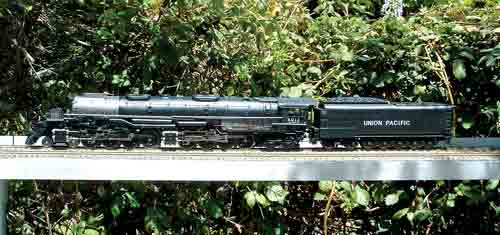
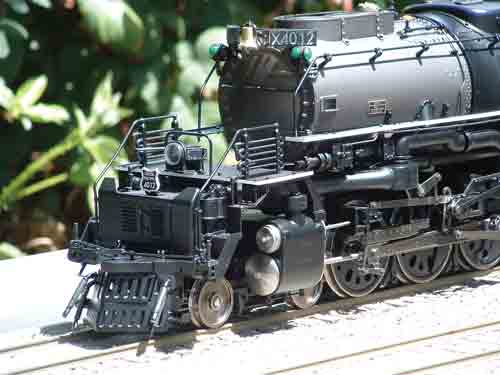
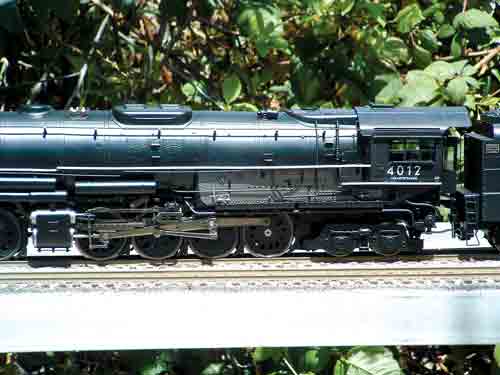
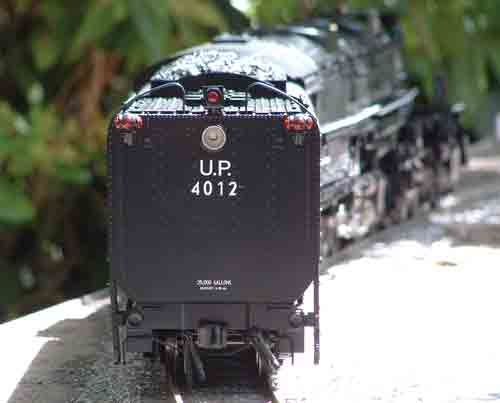
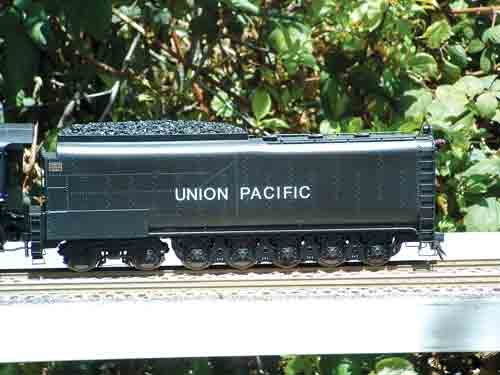
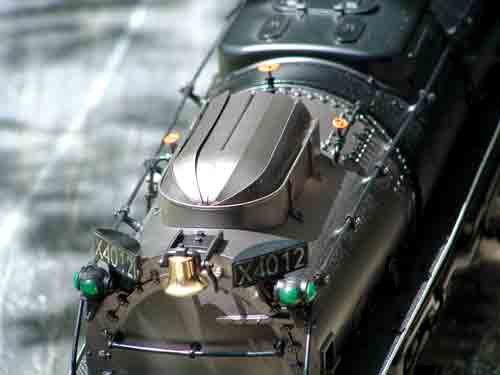

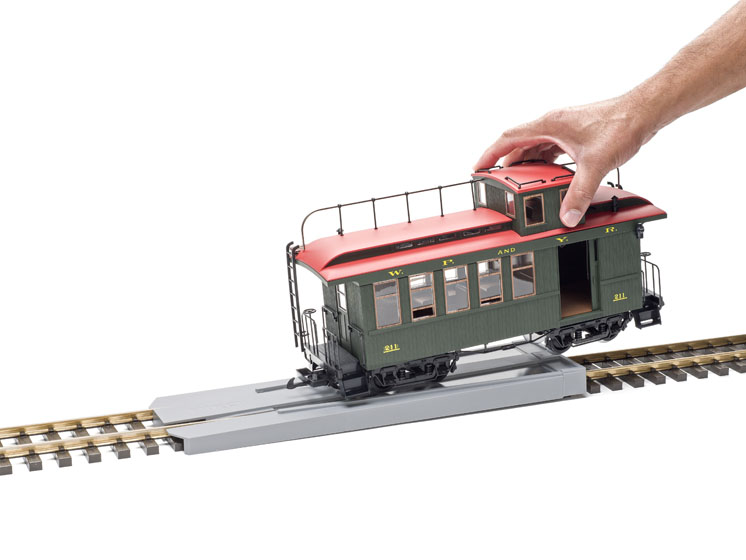

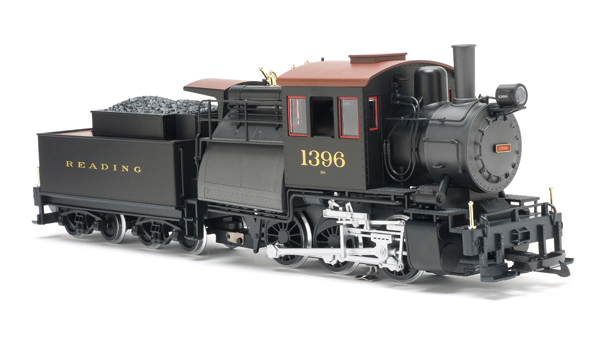





I recently acquired one of these but it has some electrical issues. I need to get inside the loco but have no idea how to. any recommendations?